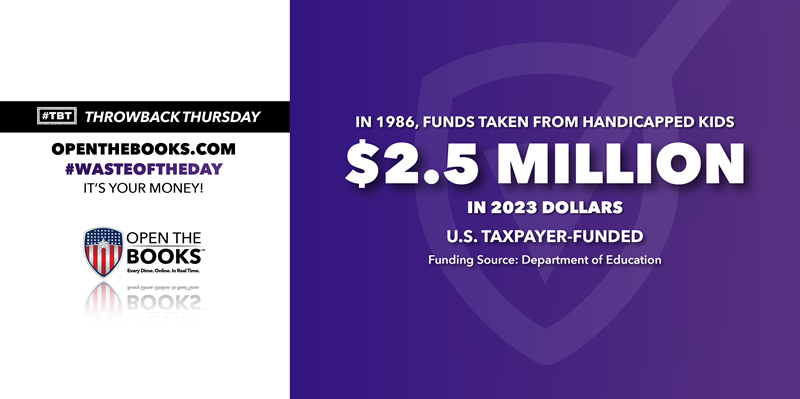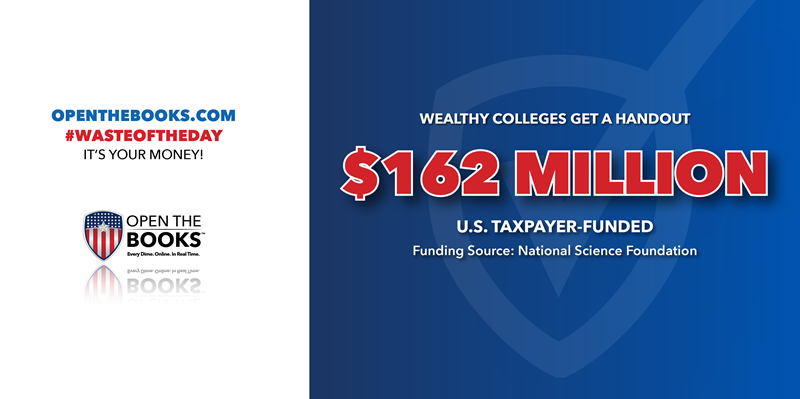
Feds Waste $7 Billion on Near-Empty Offices
August 14, 2023

The U.S. government spends about $7 billion each year to rent millions of square feet of office space that is all but left empty, according to The Wall Street Journal.
The Journal cited a recent Government Accountability Office report, which studied the usage of government office buildings. They surveyed 24 federal agencies between January and March 2023, and found these offices were only about 20% occupied on average. The GAO assumed these buildings were a representative sample of all federal office space.
Even with an ever-growing number of bureaucrats, recent remote work policies have left federal offices as ghost towns.
Agencies across the board reported low office utilization, with the bottom quarter of surveyed offices averaging about 9% attendance, and none of the 24 agencies reported a utilization above 50%.
The low office utilization is partially because of work-from-home policies instituted during the pandemic that were never updated. Even before the pandemic, however, these buildings were substantially below capacity. One agency claimed even if they had full attendance, their buildings would only be 67% full.
The federal government leases about 511 million square feet of office space each year, costing about $7 billion to rent, operate and maintain. Congress tried to address this bloat on a bipartisan basis in 2016 with the Federal Property Management Reform Act, but little action has been taken since its passage.
Private businesses with extra office space quickly stop leasing unused space to save money. Sadly, even after legislation meant to solve the problem passed, the federal government continues to use taxpayers’ money to rent deserted offices that may never reach full capacity.
New York City Agrees to Pay George Floyd Protestors $20 Million
August 15, 2023

New York City has agreed to pay out $20 million to thousands of protestors through two settlements for alleged police misconduct during the George Floyd protests in the summer of 2020, according to Reuters.
In one settlement reached in March, New York City agreed to pay out $7 million to about 300 protestors that alleged police misconduct, with each protestor receiving payouts of about $21,500. In another settlement reached on July 20, New York City agreed to pay out $13 million to about 1,300 protestors, with each protestor receiving about $9,950.
Plaintiffs alleged that police used pepper spray improperly, used excessive force with batons, and used unlawful tactics like “kettling,” or confining a group of protesters in a small area, as a method of crowd control.
The settlements still must be approved by a judge, and protestors arrested on other charges like arson are not eligible to receive the payouts.
One of the plaintiff attorneys even recognized the harm to taxpayers, saying in a statement, “the city’s taxpayers will need to keep shelling out millions until City Hall stops bowing to the worst violent whims of the NYPD.”
If the police did violate the civil liberties of the protestors, then poor training and lax oversight of these officers led to taxpayers bearing the brunt of their misdeeds. On the other hand, if this was an ideologically motivated lawsuit, then the city should have fought harder to reduce the settlement amount to better protect the interests of taxpayers.
Either way, taxpayers are on the hook for a hefty price tag thanks to the ineptitude of New York City employees.
Congressional Pet Projects —Earmarks— Cost Taxpayers $16 Billion in 2023
August 16, 2023

In 2021, earmarks returned to Congress. The practice was banned for a decade due to its tendency to fuel corruption, but has since been embraced on a bipartisan basis, leading to extraordinary spending on thousands of pet projects across the country. Open the Books mapped $16 billion worth of earmarks across 7,509 projects in FY2023, and found rampant waste and abuse.
Earmarks are special grants that lawmakers can give directly to constituents or organizations in their districts or states. While rules have changed slightly for the next fiscal year, in FY 2023, House members were allowed 15 earmarks that in total couldn’t exceed more than 1% of net discretionary spending. The Senate had the same 1% cap across the board, but no limit per member.
Open the Books found broad bipartisanship in doling out earmarks. Of the top ten earmarkers, seven were Republicans, and the top three earmarked $1.66 billion. Republicans out-earmarked their Democrat colleagues in 21 states.
There was plenty of waste in FY2023 earmarks, like $5M to the Ozark Empire Fairgrounds, $2M for the National Great Blacks in Wax Museum, $1 million for a splashpad in Michigan, and $1 million for the Macadamia Nut Health Initiative.
Open the Books also found some shocking conflicts of interest in earmarks, including $30 million earmarked by retiring U.S. Senator Patrick Leahy to the University of Vermont Honors College. In May, the university renamed the college after Leahy.
Earmarks have been labeled the “currency of corruption” for a reason, and while Republicans have claimed to reform the process for the next fiscal year, Congress needs to go further and eliminate this wasteful practice entirely like it did in 2011.
Throwback Thursday: $2.5 Million Dedicated for Handicapped Children Was Misused
August 17, 2023

Throwback Thursday!
Between 1982 and 1985, $913,000 worth of funds – over $2.5 million in 2023 dollars – that were meant to go toward handicapped children at a school in Louisiana were misused and spent on pet projects that benefited other students.
Sen. William Proxmire, a Democrat from Wisconsin, awarded the Department of Education his Golden Fleece Award in October 1986 for this egregious lack of oversight.
According to Proxmire, the funds were part of a program meant to exclusively help handicapped children, and federal law required they only be used for that purpose. Between 1982 and 1985, 13 projects were funded to ostensibly benefit only handicapped children.
Unfortunately, an audit by the Inspector General found, “Overall, the handicapped children received little, if any, benefit from the projects.” Additionally, the IG found some of the purchases were made for unallowable activities, and some of the purchased services were never actually provided.
Instead, the funds went to general purchases that benefited the entire school. In one instance, $385,200 was spent on computer software purchases. The price for these purchases was, in the auditor’s opinion, “unreasonable,” and auditors couldn’t find any justification for the contractor chosen or the price paid for its services. A similar conclusion was reached on consulting services that the school paid.
With a federal budget as large as the U.S., it’s impossible to give oversight to every contract awarded, leading to an immeasurable amount of money going towards sketchy personal pet projects instead of intended goals.
Wealthy Colleges Receive $162 Million From Feds for Science Research
August 18, 2023

The National Science Foundation announced a new initiative to fund materials science research centers at nine universities. Each of the universities will receive $18 million over the next six years, according to Forbes. These universities collectively hold billions in endowments and charge students tens of thousands of dollars to attend.
Universities receiving the funding will create centers tasked with “extending basic materials science discoveries into practical innovations and applications,” according to Forbes.
While this sounds like a laudable goal, these schools are already on the cutting edge of material science research and innovation without federal funding. Two schools, University of Illinois Urbana-Champaign and Northwestern University, are tied for #2 in the country for material science.
The schools selected also have massive coffers, which they could use to fund the programs. University of Pennsylvania has a $20.5 billion endowment and charges $59,000 for tuition. University of Michigan-Ann Arbor has a $16.8 billion endowment and charges $55,000 tuition.
The University of Illinois system has an endowment of $2.5 billion, and charges out of state students between $36,000 and $44,000 tuition. Northwestern’s endowment is $14.4 billion, and charges students $62,000 to attend.
Universities already have incentives to make scientific breakthroughs to further their reputation, and these schools have the financial means to fund these experiments. Sending millions to some of the wealthiest institutions in the world only makes them richer, leaving behind schools with smaller endowments that need the funding opportunities.
The #WasteOfTheDay is presented by the forensic auditors at OpenTheBooks.com.